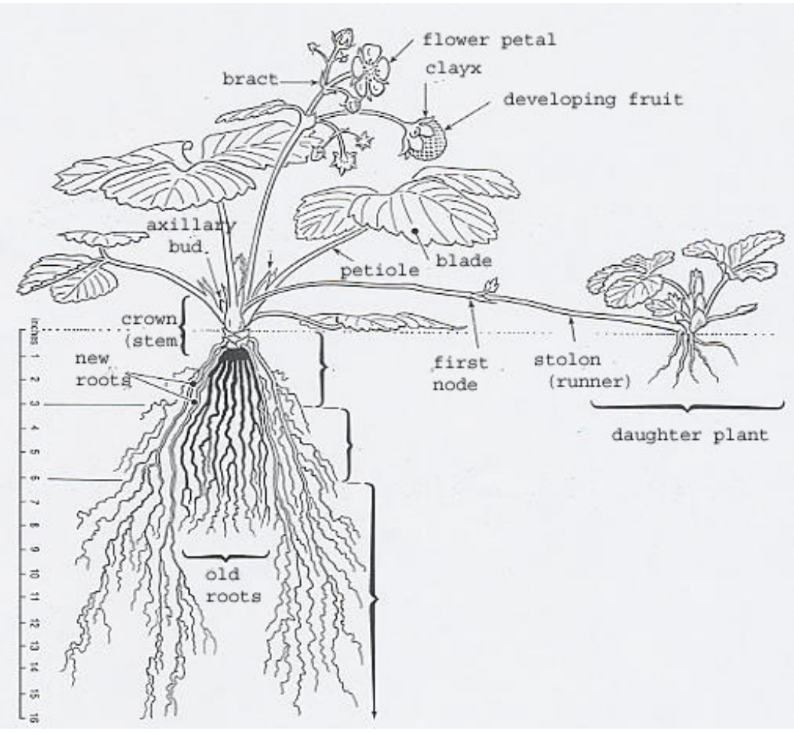The purpose of this paper is to provide a brief overview of pest management in strawberry in general and in the context of Western Australia specifically. In addition to the general description of the crop, the first section includes technical information on the most important diseases that affect it. Possible options for integrated pest management can be found at the last subsection of the report.
Crop description

The basic structure of a strawberry plant consists of the crown, also known as the stem, as well as the roots and the buds that grow from it. The latter are responsible for creating leaves and flower petals. A distinctive feature of strawberry is its tendency to form branch crowns. These are identical in functionality to the central crown and are connected to it by the means of side stems.
As for the growing preferences, the main factor to be aware of is the number of crowns. The formation of new crowns has been observed to occur mostly in the fall when the temperatures are still in excess of 50° F. It is crucial to plant at the correct time for the specific region to achieve the desired number of crowns. Having too few crowns could decrease the overall yield, and having too many may result in significantly smaller individual fruits.
Disease issues and pest management
The only disease in this report that is caused by a bacterium and not fungi is Angular leaf spot or ALS. The primary origins of ALS are transplants and plant debris left in the ground over the winter. The most effective treatment appears to be copper applications; however, using them continuously under slow drying conditions could cause phytotoxicity. The benefits of sanitation appear to be minimal, although there is a lack of precise statistics in that area.
Another disease that appears from overwintering plant debris is Verticillium Wilt. This particular condition is caused by the Verticillium dahliae fungus and is especially dangerous because of its exceptional ability to spread. The fungus contaminates equipment and vehicles used in infected fields, then transfers to healthy crops in other locations. Because of this trait, sanitation is not only highly effective but also vital in dealing with Verticillium Wilt.
Leaf blight, leaf spot, and leaf scorch are caused by different fungi but are similar in their disease cycle and the way they are controlled. All three are mainly caused by excessive rain or use of overhead irrigation as well as by spores formed in overwintered infected crops. The most logical way of addressing this issue is planting resistant varieties, although pesticides could also be used.
Gray mold also has a similar way of producing and spreading spores. The best course of action seems to be the combination of sanitation with fungicides, which lowers the risk of resistance selection. Charcoal rot, induced by Macrophomina phaseolina, does not have a fungicide that can be used to control it, but Fumigation is an adequate alternative (Fang et al., 2011, p. 112). It has also been observed that high temperatures and dry soil facilitate the disease Hutton, Gomez and Mattner, 2013, p. 150).
This particular issue appears to be the most prominent in Western Australia’s Strawberries. Finally, Botrytis Crown rot is caused by the Botrytis cinerea fungus and originates from overwintering plant debris, perennial crops, transplants, and soils; rorval is said to be the most potent countermeasure for this fungus.
Reference List
Fang, X. L. et al. (2011) ‘Severity of crown and root diseases of strawberry and associated fungal and oomycete pathogens in Western Australia’, Australasian plant pathology, 40(2), pp.109-119.
Hutton, D.G. Gomez, A.O. and Mattner, S.W. (2013) ‘Macrophomina phaseolina and its association with strawberry crown rot in Australia’, International Journal of Fruit Science, 13(1-2), pp.149-155.